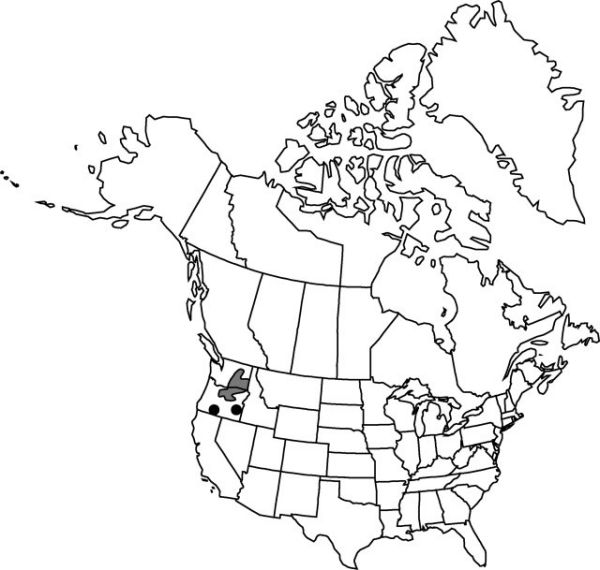Allium macrum
Proc. Amer. Acad. Arts 14: 233. 1879.
Bulbs 1–3, not clustered on stout, primary rhizome, globose to ovate, 0.6–2 × 0.5–1.5 cm; outer coats enclosing 1 or more bulbs, brownish, membranous, lacking cellular reticulation or cells arranged in only 2–3 rows distal to roots, ± quadrate, without fibers; inner coats white, lacking cellular reticulation. Leaves usually persistent, withering from tip at anthesis, 2, basally sheathing, sheaths not extending much above soil surface; blade solid, flat or channeled, ± falcate, 12–38 cm × 2–3 mm, margins entire. Scape persistent, solitary, erect, solid, ± terete, not expanded proximal to inflorescence, 9–32 cm × 0.5–4 mm. Umbel persistent, erect, loose, 10–20-flowered, globose, bulbils unknown; spathe bracts persistent, 2, 3–7-veined, lanceolate to lance-ovate, ± equal, apex abruptly acute. Flowers campanulate, 5–7 mm; tepals spreading, white or pinkish with prominent red midveins, narrowly lanceolate, ± equal, becoming papery in fruit, margins entire, apex acuminate; stamens equaling tepals or exserted; anthers yellow; pollen yellow; ovary crested; processes 3, thick, obtuse, margins entire; style linear, equaling stamens; stigma capitate, scarcely thickened, unlobed; pedicel 5–20 mm. Seed coat dull; cells ± smooth. 2n = 14.
Phenology: Flowering Apr–May.
Habitat: Barren, gravelly soils
Elevation: 100–1400 m
Discussion
Selected References
None.
